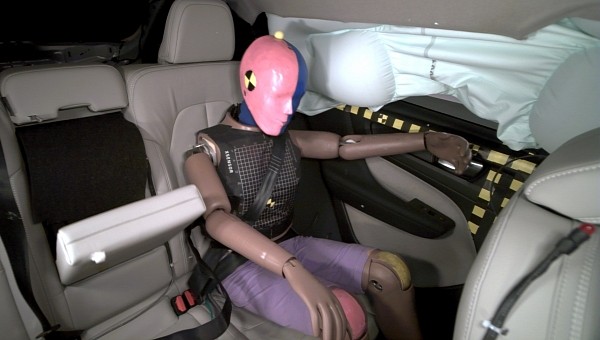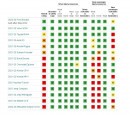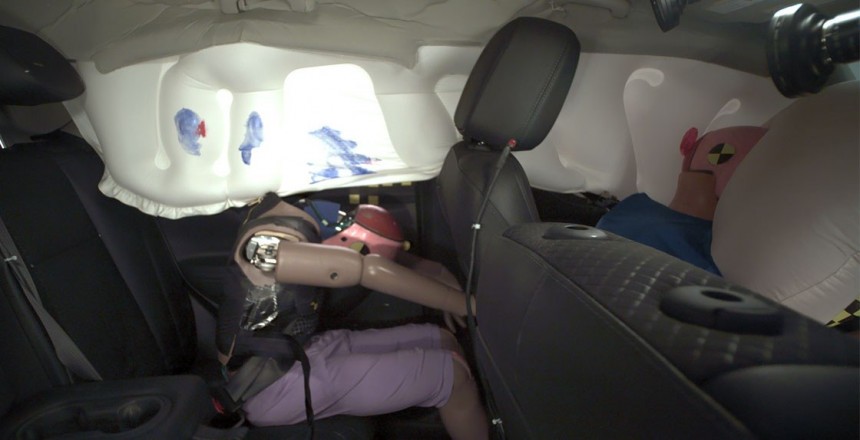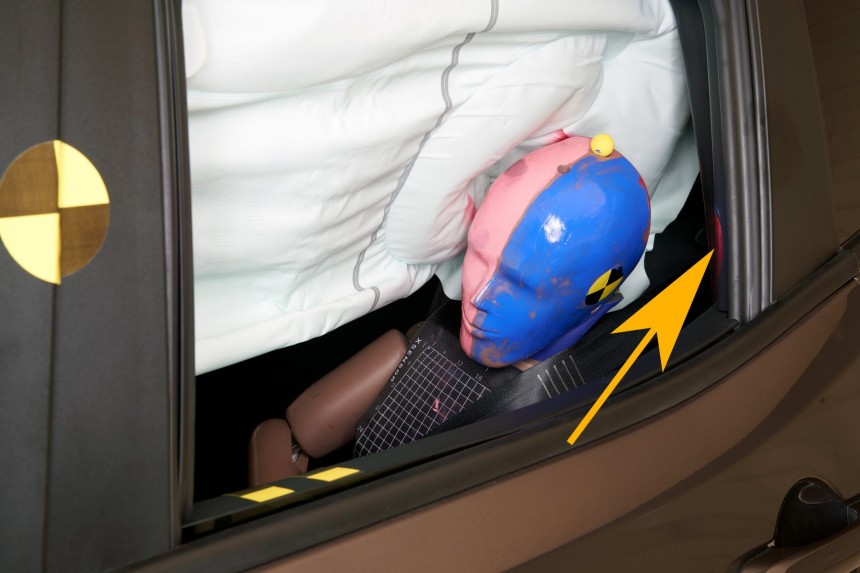The IIHS has released the results of a new kind of crash test, and not all the models that were tested managed to do good. Several vehicles that are considered safe when viewed through other crash tests got a "Poor" or “Marginal” result. Why? The new test focuses on rear-seat passengers, which have not been a focus in these tests.
The IIHS wants to change that. The institute has noted that its tests have led to the improvement of vehicles in time, and they hope to see the same effect when rear passenger safety is concerned. Naturally, when an institute that focuses on crashworthiness implements a new test scheme, others will follow suit. Fortunately, some automakers were prepared, as backseat passenger safety cannot be ignored.
In the case of the Euro NCAP, there is a test with a full-width rigid barrier that does this, on top of the usual child occupant rating, which involves using a dedicated child seat, and does not assess the backseat safety for adults or young occupants who are too tall for a child seat.
The IIHS's test involves a frontal impact with a fixed obstacle that is a moderate overlap with the vehicle. In other words, the front of the vehicle is not fully covered by the obstacle, which is less severe than a full-frontal impact, but a more common situation in real-life accidents.
The obstacle is a barrier with a deformable face made of aluminum honeycomb. The impact is on the driver's side, and forty percent of the total width of the vehicle hits the obstacle, which has been calculated to be the equivalent of a frontal offset crash between two vehicles of the same weight, with both vehicles traveling at just under 40 mph (64 kph).
According to the IIHS, the biggest fatality risk was for the front occupants up until the early 2000s, while the back seat was viewed as safe because the crumpling of the front of the vehicle led to a reduced risk for the passengers in the rear seats. Ironically, thanks to significant improvements to the front of vehicles, which made them safer than ever for front occupants, the rear seat has not grown in safety.
Instead, ever since the model year 2007, the risk of a fatal injury is 46 percent higher for belted occupants in the rear seats than for those in the front. While the front of the vehicle has become safer, the rear has not been adapted to a similar level, and the IIHS wants to change that by having automakers implement similar safety measures for rear occupants.
Among the proposed changes are seat belt tensioners with force limiters, which are not standard across all vehicles on the market, and not all operate the same as in the front seats. According to the IIHS, less than half of new vehicles have advanced restraint systems in the rear seats.
While airbags could help, the implementation of frontal airbags for rear passengers has not been done by any automaker so far. Fortunately, some manufacturers have experimented with the next best thing, airbags integrated into the seatbelts. It will be down to each automaker to enhance the safety of each model in its lineup, so we shall see what the future holds from this point of view.
The new type of crash test involves placing a Hybrid III dummy in the rear seat, behind the driver, and its role is to simulate a 12-year-old child or a small woman. The test has new metrics that focus on the injuries that are most frequently seen in rear-seat occupants, and the goal is to push automakers to make safer cars for those occupants as well, not just for the driver or the front seat occupant.
In the case of Euro NCAP, the full-width rigid barrier test has the rear occupant on the opposite side of the backseat, on the seat behind the passenger, not behind the driver.
The first test involved 15 vehicles, out of which just two managed to protect the rear occupant well enough to earn them a good rating. The models that achieved the “Good” rating in the IIHS test for rear occupant protection are Volvo XC40 and Ford Escape.
Audi's Q3, Subaru's Forester, along with the Nissan Rogue had a “Marginal” rating, while the Toyota RAV4 obtained a slightly better rating, of "Acceptable." Nine vehicles were rated “Poor” in this test: Buick Encore, Chevrolet Equinox, Honda CR-V, Honda HR-V, Hyundai Tucson, Jeep Compass, Jeep Renegade, Mazda CX-5, and Mitsubishi Eclipse Cross.
All 15 vehicles that were evaluated with the new procedure had good ratings in their initial evaluation, which means that further attention needs to be placed on rear occupant safety, which Ford and Volvo have demonstrated that is possible.
In the case of the Euro NCAP, there is a test with a full-width rigid barrier that does this, on top of the usual child occupant rating, which involves using a dedicated child seat, and does not assess the backseat safety for adults or young occupants who are too tall for a child seat.
The IIHS's test involves a frontal impact with a fixed obstacle that is a moderate overlap with the vehicle. In other words, the front of the vehicle is not fully covered by the obstacle, which is less severe than a full-frontal impact, but a more common situation in real-life accidents.
The obstacle is a barrier with a deformable face made of aluminum honeycomb. The impact is on the driver's side, and forty percent of the total width of the vehicle hits the obstacle, which has been calculated to be the equivalent of a frontal offset crash between two vehicles of the same weight, with both vehicles traveling at just under 40 mph (64 kph).
Instead, ever since the model year 2007, the risk of a fatal injury is 46 percent higher for belted occupants in the rear seats than for those in the front. While the front of the vehicle has become safer, the rear has not been adapted to a similar level, and the IIHS wants to change that by having automakers implement similar safety measures for rear occupants.
Among the proposed changes are seat belt tensioners with force limiters, which are not standard across all vehicles on the market, and not all operate the same as in the front seats. According to the IIHS, less than half of new vehicles have advanced restraint systems in the rear seats.
While airbags could help, the implementation of frontal airbags for rear passengers has not been done by any automaker so far. Fortunately, some manufacturers have experimented with the next best thing, airbags integrated into the seatbelts. It will be down to each automaker to enhance the safety of each model in its lineup, so we shall see what the future holds from this point of view.
In the case of Euro NCAP, the full-width rigid barrier test has the rear occupant on the opposite side of the backseat, on the seat behind the passenger, not behind the driver.
The first test involved 15 vehicles, out of which just two managed to protect the rear occupant well enough to earn them a good rating. The models that achieved the “Good” rating in the IIHS test for rear occupant protection are Volvo XC40 and Ford Escape.
All 15 vehicles that were evaluated with the new procedure had good ratings in their initial evaluation, which means that further attention needs to be placed on rear occupant safety, which Ford and Volvo have demonstrated that is possible.















